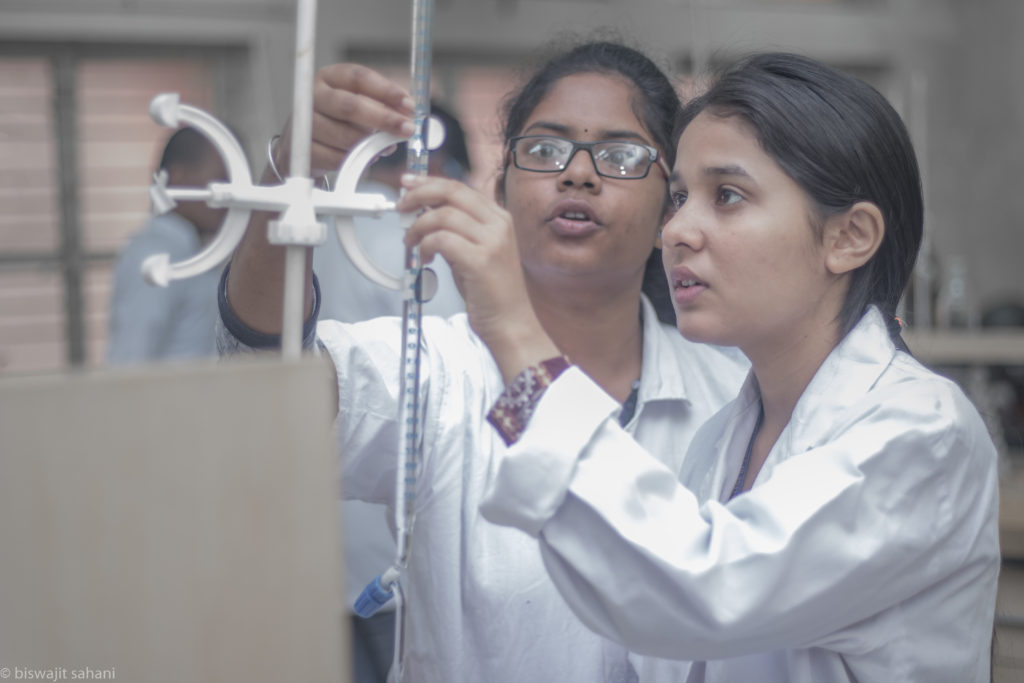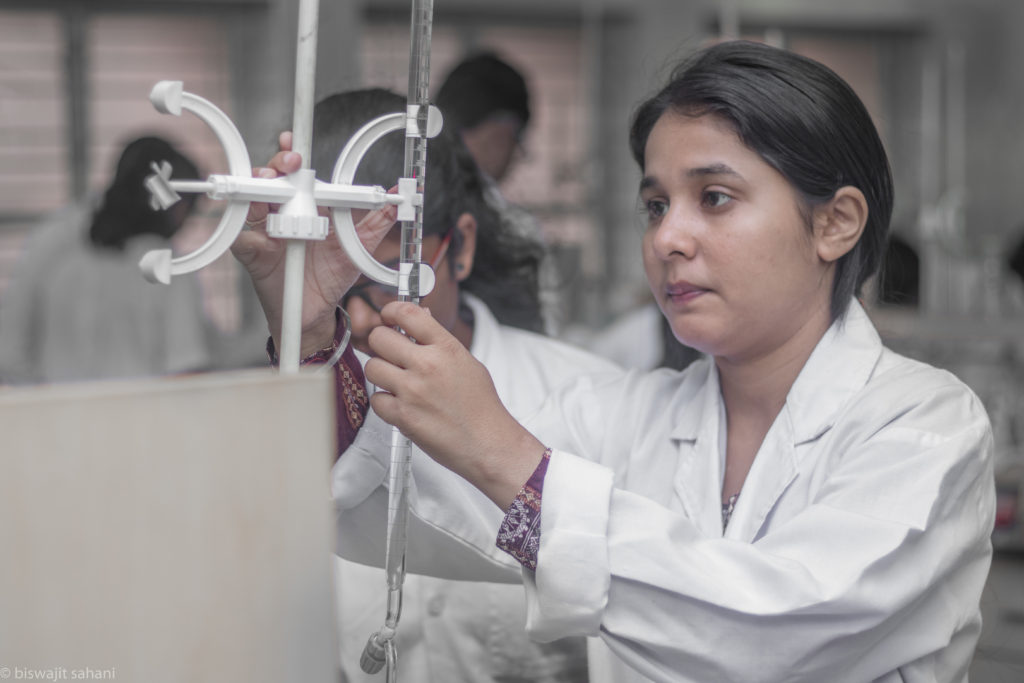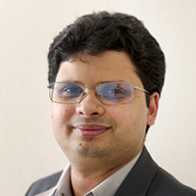
Progress in science and technology leads to material and civilisational progress. This oft-repeated maxim holds true today when we are on the cusp of the fourth industrial revolution. As the steam engine, automobile and computer symbolised the first, second and third industrial revolutions, the self-driving car is emerging as an icon for the fourth industrial revolution. Enormous strides in artificial intelligence, machine learning, robotics, smart materials, nanotechnology, quantum computing, genetic editing and manipulation since the dawn of the 21st century, are ushering in an era of unprecedented improvement in our quality of life. The emergence of new renewable energy technologies will hopefully enable us to overcome the existential threat of climate change. All of these technological advances stem from several decades of breakthrough research in the basic sciences and its adaption and commercialisation by private sector companies.
Modern science relies not just on the work of individual scientists but also on the availability of a complex eco-system, consisting of a global network of high-quality universities, autonomous public research institutions and R&D units of private sector companies. This research infrastructure is sustained largely by public investment. Governments around the world support curiosity-driven fundamental research. The private sector scales up and translates some outputs of this research into products.
This symbiosis is perhaps best exemplified by CERN—the European centre for nuclear research, which was established as a trans-European public research institution in 1954, on the outskirts of Geneva in Switzerland. It was in the news in 2012, when its Large Hadron Collider (LHC)[i], a massive particle accelerator built at a cost of 9 billion USD, was able to detect the Higgs Boson, a sub-atomic particle that completed the so-called standard model of particle physics. The existence of this particle was predicted by Peter Higgs and Francois Engelert in the 1960s and they received the Nobel prize in physics in 2013. Incidentally, the internet (in the form of the world wide web) was developed by Tim Berners-Lee at CERN in 1990[ii] although the exponential growth and widespread use of the internet is due to the efforts of several private-sector companies. These examples illustrate the role of very large public investments in fundamental research over long time horizons which might lead to significant commercial breakthroughs, although that may not be goal of the research program.
At the time of independence, India was arguably a leader among developing nations, in terms of the quality of scientific research. C.V. Raman, S. N. Bose, Meghnad Saha and Homi Bhabha were prominent world-leading scientists working in India at that time. Moreover, the establishment of the Indian Institutes of Technology (IITs) in the first decade of independence augmented many excellent existing universities and the Indian Institute of Science (IISc). The creation of the Department of Atomic Energy (DAE), Indian Space Research Organisation (ISRO), the Defence Research and Development Organisation (DRDO) and the Council of Scientific and Industrial Research (CSIR), provided further impetus to the development of science and technology infrastructure in the country.
This relative decline in the country’s scientific output can partly be attributed to the
very low public and private investment in science and technology. In the last budget, the total spending of the central government on science and technology was only 0.8% of the GDP[vi]. This should be contrasted with China, where the government spends 2.1% of a much larger GDP[vii] on science and technology.

There is a pressing need to improve the quality and quantity of scientific research in Odisha in the next two decades. The aim should be to combine public and private investment and participation in order to strengthen existing institutions and establish greenfield projects, with the ambition of emerging as leading players in the science and technology landscape of India. A set of concrete proposals include:
- The state government should set up a scheme to identify and support institutions of eminence (IOEs) based in Odisha. An empowered panel of experts (including leading non-resident Odia (NRO) scientists) should select up to 5 such institutions, with a healthy balance between public and private institutions. Greenfield private universities should also be encouraged to compete for the IOE label. The state can incentivise them by providing infrastructure in the form of land at subsidised rates. The selected public institutions should receive additional funding from the state government. The objective of this program is to enable the selected IOEs to break into the top 20 of NIRF ranking in ten years and in the top 10 in twenty years. Moreover, the selected IOEs should aim to feature in the top 500 universities of the world, as identified by university rankings, by 2036.
- The state government should collaborate with private stakeholders and the central government to establish innovation hub Bhubaneswar (IHB). This hub will be in the form of a science and technology park that includes universities, start-up and spin-off companies and R&D centres of leading private-sector technology companies. The very high rank of Bhubaneswar within the Smart Cities project of the central government, coupled with high quality of life and transport links, should be leveraged to set up this innovation hub. Successful models such as the hi-tech zones around Cambridge (Massachusetts, USA)[xvi], Cambridge (England)[xvii] and Beijing (Zhongguancun technology park)[xviii], that combine universities with spin-offs and start-ups, can be emulated in this context.
- The government should identify priority thematic areas for additional funding and encourage companies, working in these areas, to be established in the state. Priority areas may include key technologies such as artificial intelligence, smart materials and genetic editing. Odisha-specific topics such as the impact of climate change on coastal areas and its mitigation can also be considered as priority areas. The government of India is in the process of supporting many of the aforementioned priority areas. Given the very low density of centrally funded research institutions in Odisha, the state should lobby with the central government to establish research institutions and laboratories that specialize in these priority areas, preferably in IHB.
- There is a substantial need to increase the scientific manpower base of Odisha. To this end, the state government and private stakeholders should institute scholarships to support Odia students and scholars in obtaining PhDs in science and technology in leading universities of the world. Any Odia who has been admitted in a STEM (science, technology, engineering and mathematics) graduate program in a top 100 university can apply for this scholarship, which can be awarded on merit. Scholarships such as these will motivate talented Odias to pursue a career in scientific research.
Realisation of these concrete proposals will lead to a significant increase in the science and technology output of the state of Odisha. This would transform Odisha into a leading centre of research and development within India by the year 2036.
References
[i] https://home.cern/science/accelerators/large-hadron-collider
[ii] https://home.cern/science/computing/birth-web
[iii] https://www.topuniversities.com/university-rankings/world-university-rankings/2019
[iv] https://www.timeshighereducation.com/world-university-rankings/2019/world-ranking#!/page/0/length/25/sort_by/rank/sort_order/asc/cols/stats
[v] https://www.scimagojr.com/countryrank.php
[vi] http://uis.unesco.org/apps/visualisations/research-and-development-spending/
[vii] http://uis.unesco.org/apps/visualisations/research-and-development-spending/
[viii] https://en.wikipedia.org/wiki/List_of_institutions_of_higher_education_in_Odisha
[ix] http://www.csir.res.in/csir-labs
[x] http://www.dbtindia.nic.in/autonomous-institutions/
[xi] http://www.dae.nic.in/?q=node/81
[xii] http://www.dst.gov.in/autonomous-st-institution
[xiii] https://www.timeshighereducation.com/world-university-rankings/2019/world-ranking#!/page/0/length/25/sort_by/rank/sort_order/asc/cols/stats
[xiv] https://www.nirfindia.org/Home
[xv] http://mhrd.gov.in/sites/upload_files/mhrd/files/IoE_PR.pdf
[xvi] https://www.technologyreview.com/s/422108/the-evolution-of-cambridge/
[xvii] https://www.cam.ac.uk/research/innovation-at-cambridge/the-cambridge-cluster
[xviii] http://en.zgc.gov.cn
 Siddhartha Mishra is currently a Professor for Applied Mathematics at ETH (Swiss Federal Institute of Technology) Zurich, Switzerland. He was born in Bhubaneswar and received his B.Sc. (Hons) in mathematics and physics from BJB college (Utkal University) in 2000. He obtained his MS degree in Mathematical Sciences in 2003 and his PhD in 2005 from the Indian Institute of Science (IISc) and Tata Institute of Fundamental Research (TIFR). After a stint as a postdoctoral researcher at the University of Oslo, he moved to Zurich in 2009 to take up his current position. His research interests are in numerical analysis, scientific computing, nonlinear partial differential equations, computational astrophysics, computational fluid dynamics, computational climate science, machine learning and modeling and simulation of biological systems. He has published over 90 peer reviewed articles in leading scientific journals. For his research contributions, he has been honored with the Collatz prize of International Council of Industrial and Applied Mathematics (ICIAM) in 2019, The Infosys Prize in Mathematics in 2019, the Richard von-Mises prize of the International Association of Applied Mathematics and Mechanics (GAMM) in 2015, the Jacques Lious Lions award of the European Community on Computational Methods in Applied Sciences (ECCOMAS) in 2018. He serves on the editorial board of seven international journals on computational science and has been an invited speaker at many leading conferences, including the International Congress of Mathematicians (ICM) in Rio de Janeiro in 2018.
Siddhartha Mishra is currently a Professor for Applied Mathematics at ETH (Swiss Federal Institute of Technology) Zurich, Switzerland. He was born in Bhubaneswar and received his B.Sc. (Hons) in mathematics and physics from BJB college (Utkal University) in 2000. He obtained his MS degree in Mathematical Sciences in 2003 and his PhD in 2005 from the Indian Institute of Science (IISc) and Tata Institute of Fundamental Research (TIFR). After a stint as a postdoctoral researcher at the University of Oslo, he moved to Zurich in 2009 to take up his current position. His research interests are in numerical analysis, scientific computing, nonlinear partial differential equations, computational astrophysics, computational fluid dynamics, computational climate science, machine learning and modeling and simulation of biological systems. He has published over 90 peer reviewed articles in leading scientific journals. For his research contributions, he has been honored with the Collatz prize of International Council of Industrial and Applied Mathematics (ICIAM) in 2019, The Infosys Prize in Mathematics in 2019, the Richard von-Mises prize of the International Association of Applied Mathematics and Mechanics (GAMM) in 2015, the Jacques Lious Lions award of the European Community on Computational Methods in Applied Sciences (ECCOMAS) in 2018. He serves on the editorial board of seven international journals on computational science and has been an invited speaker at many leading conferences, including the International Congress of Mathematicians (ICM) in Rio de Janeiro in 2018.
Disclaimer: The views, thoughts, and opinions expressed in the content belong solely to the author, and not necessarily to the author’s employer, organization, committee, or other related groups or individuals, including Marg Advisory Services.


Sudeep Hota
29 May 2020As a science and tech enthusiast, I would say that the need to promote and invest in local research and development is crucial to development of indigenous technology, reversal of brain drain, fuelling of the economic growth engine, wealth creation, balance of trade and self-reliance.
Over the past many decades India has surely built indigenous missiles and satellites, but the bulk of the tech innovation has come from the private sphere here, from automobiles, to pharmaceuticals to heavy engineering to tech services. But that’s far and few compared to the untapped potential and in comparison to several other nations in Europe, North America and parts of Asia.
Like the way this article has provided some background as well as some suggestions on what can be potentially done.
Sukanya Rath
29 May 2020Thank you for the feedback. Please revisit again for more such reads.
Shubhranshu Patnaik
29 May 2020An excellent point of view – well researched and insightful. I hope the policy makers take note of his proposals.
Sukanya Rath
29 May 2020Thank you. We do hope to highlight the recommendations at different levels of appropriate fora.
Sanjib Hota
10 Jun 2020His analysis and his suggestions to uplift the scientific research by a suitable collaboration of Govt. and private efforts are quite constructive for Odisha. Biggest problem in Odisha is very poor quality of education and scientific research in Universities. Standard of teaching and inquisitive pursuit to make a breakthrough both in fundamental and applied research is just not there. No University in Odisha , nay India, makes any good earning by selling its knowledge to industry and commerce. There is heavy inbreeding in Indian universities, implying that students with less excellence passing out of a certain university get jobs for teaching and research in the same university. This makes the research environment less than desirable. True, research in a scientific subject (particularly natural science) calls for a dedicated band of first generation researchers under much experienced peers, who have proved their worth earlier, will work in a big way, if funded uninterruptedly by the state and private bodies . Research is a plunge into a path of uncertainty full of risk which the funding agencies must appreciate and should not be impatient for quick results as per their expectation.
The word “Research” can be divided into two words namely “RE” and ” SEARCH”which means students and teachers should search first through a combination of information and data and then research to go to a higher layer of achievement which we may call knowledge. In Odisha we have to create such an environment first!
Sukanya Rath
10 Jun 2020We are very thankful for your feedback, Sir. We hope to bring our readers many such thought-pieces in the coming days and weeks. Do keep reading and sharing your thoughts.
Warm regards,
Team MAS